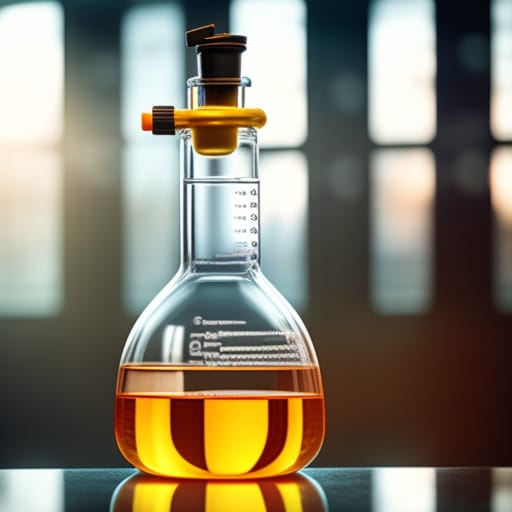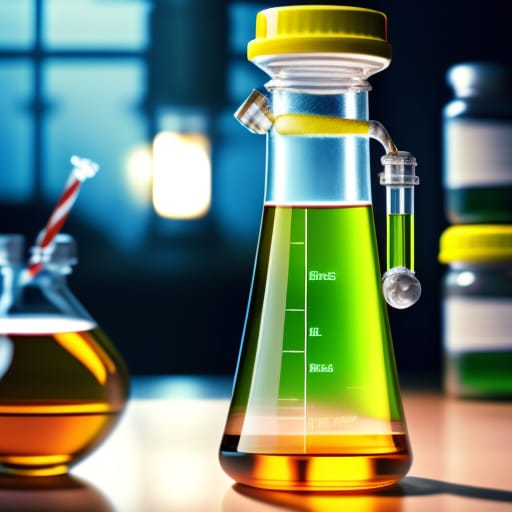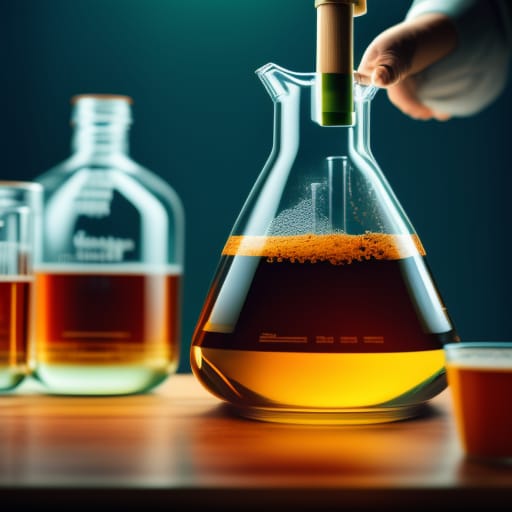Crystal growing can be a fun and educational hobby for both kids and adults. However, there are also potential hazards and risks involved when growing crystals at home. Following proper safety precautions and procedures is crucial to prevent accidents and injuries. This beginner’s guide covers all the key crystal growing safety tips you need to know before starting your crystallization experiments and projects.

An Introduction to Crystal Growing Safety
Crystal growing, also known as crystallization, involves producing crystalline solids from a solution. This process requires the use of various chemicals, equipment, and materials that can pose safety concerns if not handled properly. Common potential hazards include:
- Exposure to toxic or corrosive chemicals
- Cuts and punctures from broken glassware
- Burns from hot liquids and heated equipment
- Fire and explosions from flammable chemicals
Fortunately, most risks can be minimized by implementing basic safety practices and having the proper safety gear. It’s important for beginners to learn and follow all necessary precautions before attempting to grow crystals at home.
Key Safety Precautions for Crystal Growing
Some of the top safety precautions for crystal growing experiments include:
- Wearing personal protective equipment (PPE) like safety goggles, gloves, lab coats, closed-toe shoes, and masks
- Working in a well-ventilated area to avoid inhaling fumes
- Keeping a fire extinguisher nearby when using heat sources or flammable chemicals
- Following safe chemical handling procedures
- Learning proper operation of lab equipment like hot plates
- Knowing emergency response protocols in case of spills, fires, or injuries
- Carefully reading warning labels and safety data sheets (SDS) for all chemicals
- Storing chemicals, glassware, and equipment securely when not in use
Essential Crystal Growing Safety Guidelines
All crystal growers should educate themselves on general lab safety principles and follow crystal growing safety guidelines suitable to their specific project. Key guidelines include:
General Lab Safety Guidelines
- Keep your work area clean and organized
- Never eat, drink, or smoke in the lab area
- Tie back long hair and avoid wearing loose clothing or jewelry
- Wash hands thoroughly after working with chemicals
- Use equipment and lab glassware properly to prevent damage
- Handle broken glassware carefully to avoid cuts
- Report any spills, accidents, or unsafe conditions immediately
Chemical Safety Guidelines
- Verify a chemical’s identity before using it
- Check chemical compatibility before mixing
- Never “sniff test” chemicals
- Add acid to water slowly to prevent splashing
- Use minimal amounts of hazardous chemicals
- Don’t return unused chemicals to stock bottles
- Properly label all containers with content and hazard warnings
- Use extra caution with flammable, toxic, or corrosive substances
Equipment Safety Guidelines
- Inspect equipment for damage before each use
- Follow manufacturer instructions carefully
- Secure long hair and loose clothing when using mechanical equipment
- Unplug electrical equipment before servicing or adjusting
- Allow hot plates, ovens, and other heat sources to fully cool before handling
- Use heat-resistant gloves when handling heated containers
- Don’t leave operating equipment unattended
Cleaning up spills right away, wearing PPE at all times in the lab, and never working alone are wise guidelines to follow as well.
Examples of Specific Safety Rules
- No eating or drinking while in the lab
- Always add acid to water, not water to acid
- Check glassware for scratches or cracks before each use
- Use a safety shield when heating chemicals
- Limit working time with corrosive chemicals like acids
- Store flammable liquids in approved safety cabinets
- Inspect electrical cords and plugs for damage before use
- Verify gas valves and connections prior to use
- Follow emergency exit routes and protocols

Must-Have Safety Equipment for Crystal Growing
Investing in basic lab safety equipment is necessary for every crystal growing setup. Essential safety gear includes:
Personal Protective Equipment (PPE)
- Safety goggles – Protect eyes from splashes, dust, projectiles
- Lab coat/apron – Prevents skin exposure to chemicals
- Gloves – Insulate hands from heat, cold, and contact with hazardous substances
- Face mask – Guards against inhaling particulates or fumes
- Closed-toe shoes – Protect feet from spills and dropped equipment
Ventilation System
- Fume hood – Safely directs fumes away from the user’s breathing zone
- Exhaust fan – Removes potentially hazardous vapors and gases
- Ventilation hood – Captures contaminants emitted from equipment
Fire Safety Equipment
- Fire extinguisher – Class ABC extinguisher suitable for common lab fires
- Fire blanket – Smothers small fires
- Eye wash station – Rinses eyes immediately in case of exposure
- First aid kit – Treats minor injuries
Other Essential Safety Gear
- Chemical spill kit – Safely contains and cleans up spills
- Safety shields – Provide a barrier between the user and reactions
- Chemical storage cabinets – Securely store hazardous substances
- Fume scrubbers – Filter out toxic gases and vapors
Key Crystal Growing Safety Procedures
Having detailed safety procedures for every step of the crystal growing process is vital. Important procedures include:
Safe Chemical Handling
- Use carts or carriers when transporting chemicals
- Read chemical labels and SDS forms before use
- Pour chemicals slowly and carefully
- Measure reagents in a fume hood when possible
- Keep chemical containers sealed when not in use
- Segregate incompatible chemicals during storage and use
Safe Equipment Operation
- Visually inspect equipment before use
- Follow manufacturer instructions precisely
- Load specimens and chemicals properly to prevent spills
- Allow sufficient warm-up and cool-down times when applicable
- Stay focused when operating mechanical moving parts
Emergency Response
- Keep emergency contact numbers visible
- Know the location of all safety equipment like fire extinguishers
- Follow emergency and spill response protocols if an accident occurs
- Report any injuries, exposures, or safety incidents immediately
- Be prepared to provide SDS forms to emergency responders if needed
Chemical Waste Disposal
- Correctly label waste containers
- Follow safety guidelines when transporting waste
- Ensure compatibility before combining chemical waste
- Contact approved waste handlers for proper disposal
Common Crystal Growing Hazards and How to Avoid Them
While the dazzling crystals are the goal, crystal growing does present some inherent hazards if precautions aren’t taken:
Chemical Hazards
- Toxicity – Use the least toxic chemicals available; substitute when possible
- Corrosion – Wear PPE to avoid skin/eye contact
- Flammability – Avoid ignition sources; use minimal amounts
- Reactivity – Check for incompatible chemicals before combining
Physical Hazards
- Cuts – Handle broken glass carefully; wear gloves
- Burns – Use hot pads; allow to cool before handling
- Slips/Falls – Clean up spills immediately; wear proper footwear
Biological Hazards
- Mold – Disinfect and decontaminate equipment and surfaces
- Bacteria – Use sterile techniques when inoculating solutions
- Specimen-borne – Take caution when collecting unknown specimens
Strategies for Hazard Avoidance
- Seek less hazardous alternative chemicals and methods
- Scale down the experiment size to use smaller amounts of chemicals
- Work slowly and focused to prevent accidents
- Limit access to the lab to only trained personnel

Essential Crystal Growing Safety Training
All personnel involved in crystal growing must receive proper safety training. Training should cover:
General Lab Safety Training
- Review of lab safety fundamentals and procedures
- Location and use of PPE, first aid kits, fire extinguishers
- Proper handling and transport of lab equipment
- Proper storage, labeling, and segregation of chemicals
- Spill response protocols and emergency contact procedures
Chemical Safety Training
- Reading and interpreting SDS forms
- Risks and safe handling of hazardous chemicals
- Proper usage and disposal of chemicals
- Acute and chronic health effects of chemical exposure
- Use of fume hoods and other ventilation
Equipment Safety Training
- Reading equipment manuals and understanding capacity limits
- Step-by-step standard operating procedures for equipment use
- Calibration, preventative maintenance, and servicing needs -Recognition of damage, defects, and other unsafe conditions -Decontamination and cleaning procedures
Personnel should demonstrate proficiency before being permitted to work independently. Safety training should be repeated and updated regularly. Detailed training logs should be maintained.
Implementing Robust Crystal Growing Safety Management
Beyond initial training, maintaining strong ongoing safety management is vital for any crystal growing program:
Conduct Regular Risk Assessments
- Identify chemical, physical, biological, and other hazards
- Estimate likelihood and severity to gauge risks
- Implement controls to eliminate or reduce high-risk activities
Perform Frequent Safety Inspections and Audits
- Audit facilities, equipment, supplies, and procedures routinely
- Verify personnel are complying with all safety guidelines
- Identify any red flags or areas needing improvement
- Conduct incident investigations to identify root causes
Cultivate a Strong Safety Culture
- Leadership endorses and enforces safety as a top priority
- Employees take personal responsibility for safety
- Open communication about hazards and precautions is encouraged
- Safety metrics and performance are tracked and rewarded
Understanding Crystal Growing Safety Regulations
In addition to in-house safety programs, crystal growing must comply with all relevant government safety regulations. Key regulations include:
Federal Regulations
- OSHA Hazard Communication Standard (29 CFR 1910.1200)
- OSHA Laboratory Standard (29 CFR 1910.1450)
- EPA Hazardous Waste Management Standards (40 CFR 260-282)
State Regulations
- Hazardous chemical inventory reporting
- Hazardous waste generator and disposal requirements
- Safety training and reporting mandates
Local Ordinances
- Fire codes
- Business licenses
- Zoning limitations on lab activities
- Hazardous materials storage restrictions
Knowing the applicable federal, state, and local regulations is essential for regulatory compliance. An environmental health and safety specialist should be consulted.
Assessing and Improving Crystal Growing Safety Performance
Regular assessments help identify gaps and opportunities for improving safety:
Conduct Hazard Assessments
- Document all chemical, equipment, and process hazards
- Identify areas most likely to cause injury or loss
Perform Risk Assessments
- Gauge relative risks based on likelihood and severity
- Prioritize addressing high-risk hazards first
Evaluate Safety Metrics
- Record key performance metrics like incident rates and audit findings
- Compare against benchmarks to measure progress
- Use data to target safety improvements
Bringing in external safety consultants for a fresh perspective can provide added value.
Key Elements of a Safety Inspection and Audit Program
Safety inspections and audits should systematically evaluate:
Routine Lab Inspections
- Check that PPE supplies are adequate
- Verify equipment is operating properly
- Examine storage and handling of chemicals
- Confirm good housekeeping practices are followed
Compliance Audits
- Review safety policies and procedures are current
- Check training records are up to date
- Confirm appropriate signage and labeling is in place
- Verify permits and reports are filed on time
Incident Investigations
- Interview personnel involved and witnesses
- Document scene through notes, photos, and diagrams
- Identify root and contributory causes like equipment failures or insufficient training
- Recommend corrective actions
Inspections, audits, and incident investigations provide crucial data to enhance the safety program on an ongoing basis.
Elements of a Comprehensive Crystal Growing Safety Program
An effective crystal growing safety program touches on:
Safety Management System
- Written policies and procedures
- Hazard inventory and risk assessments
- Emergency response plans
- Incident reporting and investigation process
- Safety goals and performance monitoring
Training Programs
- Initial onboarding and ongoing refresher training
- Hazard communication training on SDS forms
- Hands-on equipment and process training
- Contractor safety training requirements
Safety Culture and Leadership Commitment
- Leaders actively demonstrate safety commitment
- Employees are empowered to report concerns
- Open communication about safety is encouraged
- Safety performance ties into evaluations and rewards
Fostering a Strong Safety Culture
Safety culture refers to shared attitudes, perceptions, and approaches toward safety within an organization. Traits of a robust safety culture include:
- Safety is a clear organizational priority
- Reporting issues is encouraged without fear of retaliation
- Employees feel personal responsibility for safety
- Problems are viewed as opportunities to improve rather than assign blame
- Safety performance is continuously monitored and optimized
- Personnel at all levels participate in safety programs
Senior leadership commitment and ongoing investment in training and safety management system improvements drive excellent safety culture.
Elements of an Effective Crystal Growing Safety Plan
Before initiating any new crystal growing project, an effective safety plan should be developed covering:
Hazard Identification
- Review details of materials and equipment to be used
- Conduct a comprehensive what-if analysis
- Identify all potential chemical, physical, and other hazards
Risk Assessment
- Evaluate the likelihood and severity of identified hazards
- Determine risk control measures needed to mitigate high risks
Detailed Safety Procedures
- Standard operating procedures for equipment usage
- Hazardous materials handling and precautions
- Required personal protective equipment
- Emergency response protocols
The safety plan should be continuously reviewed and updated as needed throughout the project lifecycle as conditions evolve.
Helpful Resources for Crystal Growing Safety
For those seeking to learn more about safety for crystal growing and related lab activities, some helpful resources include:
- American Chemical Society Safety Guidelines – Broad range of guidance for lab safety
- Flinn Scientific Reference Manuals – Detailed instructions and fact sheets on lab safety topics
- ASM International Guidelines for Chemical Laboratory Safety in Secondary Schools – Targeted recommendations for academic labs
- U.S. OSHA Laboratory Safety Guidance – Overview of key federal regulations and requirements
- U.S. EPA Chemical Safety Resources – Tips and tools for safely managing laboratory chemicals
Key Takeaways on Crystal Growing Safety
Safety should always be the top priority when undertaking any crystal growing projects as a hobbyist or professional. Keep these essential safety tips in mind:
- Educate yourself on potential hazards and train personnel thoroughly
- Follow all recommended safety guidelines and regulations
- Use appropriate personal protective equipment and lab safeguards
- Employ prudent chemical handling procedures and equipment operation
- Implement strong safety management and culture institution-wide
- Assess risks and establish detailed safety protocols before starting any new crystal growing endeavor
While no activity is risk-free, making safety your first consideration will help ensure your crystal growing pursuits can be rewarding and enjoyable.
Frequently Asked Questions
What are some basic safety precautions I should follow when crystal growing at home?
Some basic safety precautions include wearing personal protective equipment like safety goggles and gloves, working in a well-ventilated area, avoiding heat or ignition sources when using flammable chemicals, following manufacturer instructions for equipment use, and keeping safety data sheets on hand for all chemicals used. Only work on small scales and keep hazardous chemicals secured and out of reach of children.
What kind of lab equipment safety do I need to worry about for a basic crystal growing setup?
Read equipment manuals thoroughly and follow instructions carefully. Inspect for damage prior to use. Allow sufficient warmup and cooldown times when applicable. Use hot gloves when handling heated containers and equipment. Keep long hair tied back and avoid wearing loose clothing that could get caught in moving parts. Always unplug equipment before adjusting or servicing.
What are some chemical safety guidelines I should follow when growing crystals?
Never eat, drink, or smoke in the lab area. Use extra caution with toxic or corrosive chemicals and only work in small quantities. Check compatibility before mixing chemicals. Add acids to water slowly to avoid splashing. Label all containers clearly. Use chemical spill kits to promptly clean up any spills. Follow local regulations for proper chemical waste disposal.
How can I promote a strong safety culture for crystal growing in an academic lab setting?
Cultivate an environment where safety is a clear priority from leadership down. Empower lab personnel to voice concerns without fear of retribution. Encourage asking questions and reporting issues promptly. Track and reward good safety performance. Foster teamwork and shared responsibility for lab safety. Provide extensive initial and refresher safety training. Lead by example in following all lab precautions and procedures.
What steps should I take to ensure crystal growing safety before attempting to grow crystals for the first time?
First, educate yourself as much as possible on the process and hazards through training and research. Prepare your lab area to reduce risks – install vent hoods, have PPE and safety gear on hand, and secure chemicals and equipment properly. Start with small-scale, low-risk trials first before progressing to more complex setups. Identify hazards and control measures. Document detailed safety procedures. Practice emergency response. Consider consulting an experienced crystal grower or safety expert for input and advice.